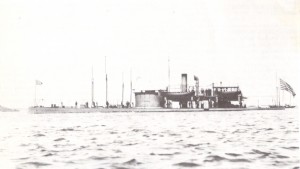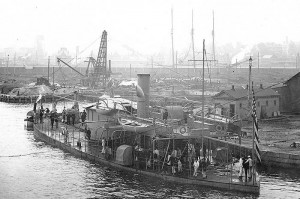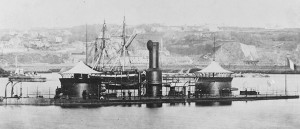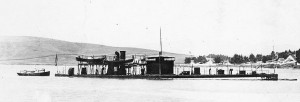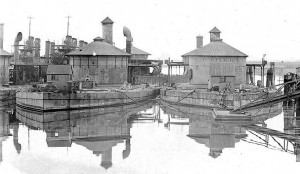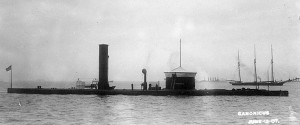The US Navy built more than forty ironclad monitor warships during the Civil War (some of them weren’t completed until after the war was over). Some of these monitors had surprisingly long service lives, being pulled out of mothballs for harbor defense duty during the Spanish American War; some even lasted into the first decade of the twentieth century before being scrapped.
I’ve been doing research on the navies of 1862 for my third book in the August Micholson Chronicles, Fire on the Waters, and I came across these fascinating photographs of vessels of the US monitor fleet in their dotage. Some of these photos are so clear and sharp, you almost feel as if you are standing on a dock and staring across the water at an actual monitor.
It’s also fascinating to see how much additional superstructure got added to some of the monitors for their Spanish American War service, a complete repudiation of the builder of the first monitor, John Ericsson’s dictate that the decks of a monitor should be cleared for all-around fire. But the superstructure was necessary to make extended service on the vessels bearable for their crews, for temperatures rose to awful heights below decks, and the below-decks spaces were cramped and suffered from poor ventilation.
One of the river monitors, the double-turreted USS Onondaga was sold to France after the Civil War and, after crossing the Atlantic (a heroic feat for such a low-freeboard vessel as a monitor) served in the French Navy from 1867 until the early 1870s. She was then mothballed and was not scrapped until 1904.
All of the pieces of the USS Comanche were fabricated on the East Coast during the Civil War and were then shipped to the West Coast to be put together at the Mare Island Naval Station. Because of this unusual method of building, she was not completed until after the war, when she was placed in mothballs. Here she is off Mare Island during the Spanish American War, perhaps hoping for the war service she failed to see thirty-five years earlier.
After the Spanish American War, the monitors were quickly mothballed again. Here is a wonderful photo of the USS Lehigh and the USS Montauk at rest in the Philadelphia Navy Yard in 1902. The last survivor of the Civil War monitors was the USS Canonicus, veteran of the attack on Fort Fisher. She was towed from Florida to Hampton Roads, Virginia in mid-1907 to take part in the Jamestown Exposition as the last surviving Civil War ironclad. She was finally scrapped the following year.

